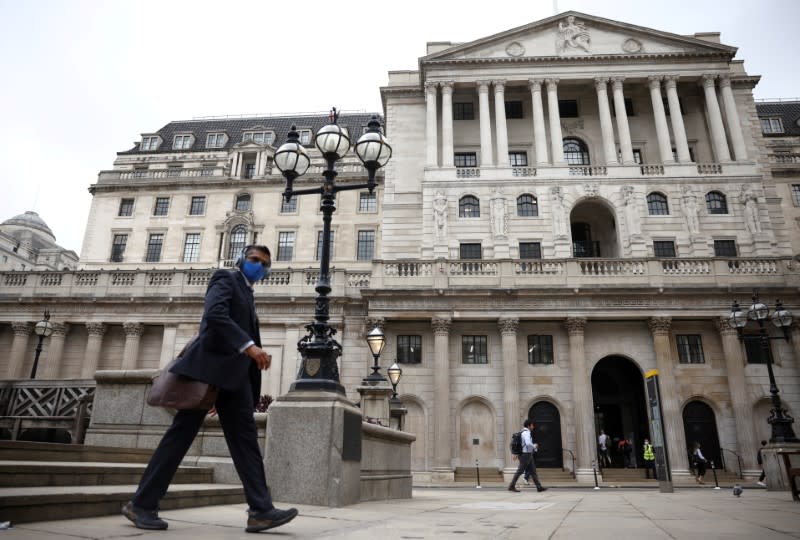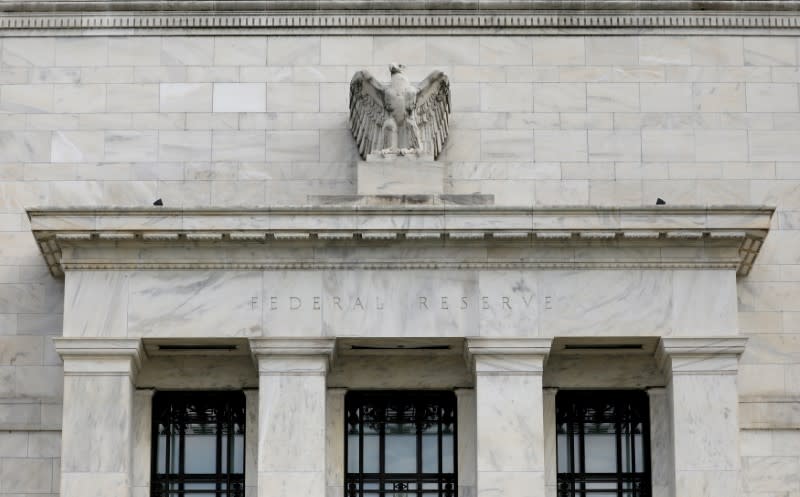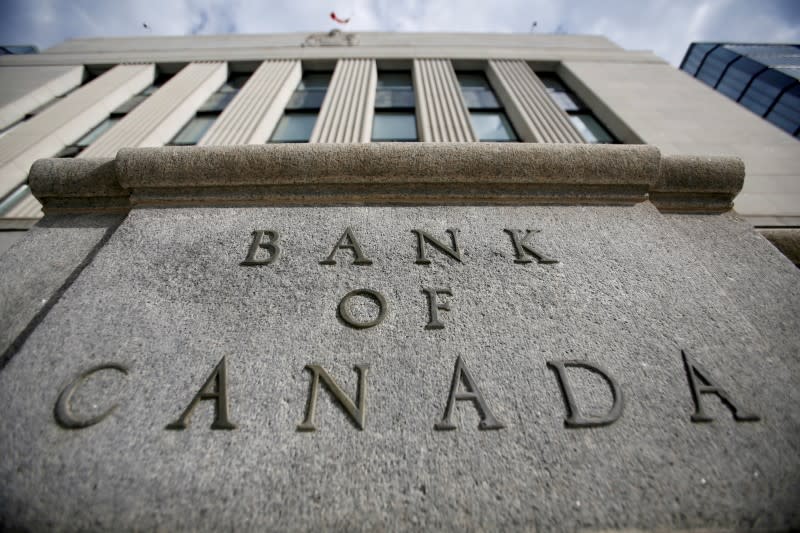The great exit: central banks line up to dial back emergency stimulus
(Repeats to insert additional chart for U.S. entry, no change to text)
By Dhara Ranasinghe and Saikat Chatterjee
LONDON (Reuters) -The U.S. Federal Reserve is projecting a faster timetable for interest rate rises and Norway's central bank is preparing markets for four rate hikes by mid-2022, the latest signs policymakers are preparing to exit pandemic-driven stimulus.
With developed economies bouncing back robustly as COVID-19 vaccination campaigns allow for easing lockdown restrictions and inflation warnings flicker, a debate about dialling back emergency stimulus has clearly begun.
Here's a look at who is tapering, who may raise rates first and who might be the last to call time on pandemic-era money-printing.
1/NORWAY
Norges Bank is at the vanguard in terms of signalling a retreat. It could hike its key policy interest rate twice in the second half of this year and also twice during the first half of 2022, central bank Governor Oeystein Olsen said on Thursday.
It kept rates on hold at a record low 0% and said a first hike is likely in September.
This outlook has made the crown this year's second best-performing G10 currency. The central bank doesn't intervene in bond markets, so the taper debate is not applicable.
2/ CANADA
Having announced tapering in April, Canada has indicated its key interest rate could rise from a record-low 0.25% in the second half of 2022.
3/ NEW ZEALAND
New Zealand's gross domestic product (GDP) rose 1.6% in the three months through to March, well ahead of forecasts and the Reserve Bank of New Zealand's (RBNZ) estimate of a 0.6% fall.
ANZ Bank has brought forward its forecast for a rate rise from the current 0.25% to February 2022, saying "a year from now feels too far away".
But policymakers appear in no hurry to taper their NZ$100 billion ($72 billion) quantitative easing programme.
4/ UNITED STATES
The Fed on Wednesday began closing the door on its pandemic-era stimulus. Officials moved their first projected rate increases to 2023 from 2024, with 13 of 18 policymakers foreseeing a "liftoff" in borrowing costs that year and 11 seeing two quarter-percentage-point rate rises.
The Fed also opened talks on how to end crisis-era bond-buying, adding that the 15-month-old health emergency was no longer a core constraint on U.S. commerce.
But Fed bond buying is set to remain significant for some time, likely limiting a selloff in bonds.
5/ BRITAIN
UK inflation zipped above the Bank of England's 2% target in May for the first time in two years -- plenty for the Bank of England to mull when it meets next week.
Still, economists expect the BoE to look past any temporary rise in price pressures and maintain a steady hand.
The BoE last month slowed its bond-buying to 3.4 billion pounds ($4.8 billion) a week, from 4.4 billion-pounds. It kept the total size of the bond-buying programme unchanged at 895 billion pounds, with Governor Andrew Bailey stressing the move did not amount to tapering.
6/ SWEDEN
Swedish inflation is just above the Riksbank's 2% target but the central bank believes inflation has peaked.
Policymakers have said rates would stay at 0% for years, warning against withdrawing support too quickly. A 700 billion crowns ($84 billion) asset purchase programme is scheduled to expire at end-2021.
7/ AUSTRALIA
Australia's economic rebound has surpassed expectations but the Reserve Bank of Australia, which has underscored its dovish credentials by adopting yield curve control, could be among the last to tighten.
Policymakers are reluctant to raise the 0.1% cash rate until inflation is back in the 2-3% band -- unlikely until 2024. The RBA will in July consider whether to extend its A$100 billion ($77.45 billion) QE programme, which ends in September.
But sticking to its dovish message could become harder -- data on Thursday showed job creation blew past expectations in May.
8/ EURO ZONE
The ECB is sticking with an elevated level of bond buying and is likely to be one of the last major central banks to hike rates.
As the economy rebounds some policymakers are making the case to start discussions about rolling back the 1.85 trillion euro ($2.21 trillion) Pandemic Emergency Purchase Programme (PEPP), scheduled to run until at least end-March.
Chief Economist Philip Lane said it was "premature and unnecessary" to discuss questions related to ending PEPP, especially since unemployment remains high and wage pressures muted.
9/ JAPAN
The BOJ meets on Friday and is expected to keep its money spigots wide open to support a fragile recovery, reinforcing expectations it will lag counterparts in reversing crisis-mode policies.
But even in Japan, which has battled with deflationary forces for years, a policy shift debate has started.
Former central bank executive Eiji Maeda said the BoJ could in 2023 start debating ways to phase out its extraordinary stimulus, such as ending negative interest rates.
10/ SWITZERLAND
The Swiss National Bank plans to keep monetary policy ultra-loose for the foreseeable future and believes projected higher inflation is no reason to change course.
The SNB does not intervene in domestic bond markets, instead capping the Swiss franc through foreign exchange interventions which totalled nearly 110 billion francs ($120 billion) in 2020. The proceeds are used to buy foreign stocks and bonds.
(Reporting by Dhara Ranasinghe and Saikat Chatterjee; Additional reporting by Sujata Rao; Editing by Tommy Wilkes and Gareth Jones)

 Yahoo Finance
Yahoo Finance 


